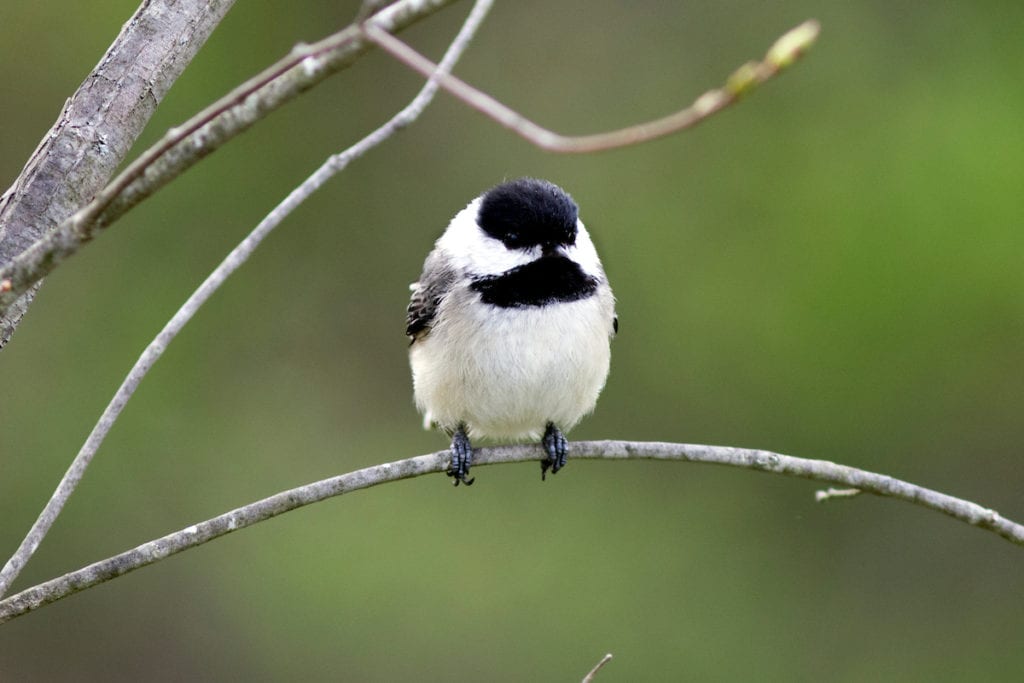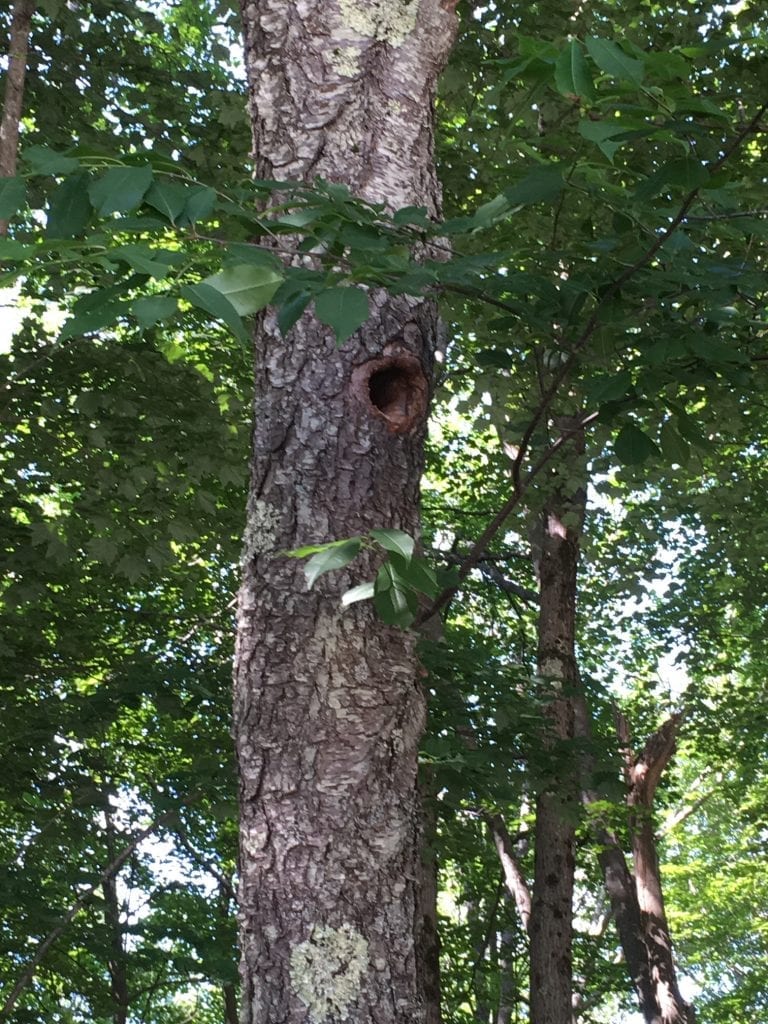
Maine Audubon regularly features posts by guest authors as part of our Maine’s Naturalist series. If you’d like to explore contributing a post about Maine wildlife, send an email to media@maineaudubon.org.
In mid-July, a bird feeder upended my understanding of “home.” I was looking out the window at a lowly feeder at Gilsland Farm, admiring the sparrows darting out of a nearby bush and then scratching under a little shelf put up to shelter them. Watching them, I realized that “home” for the sparrows isn’t just the bush, but the whole habitat – food, shelter, and water from a nearby birdbath. One bush does not make a home.
When I think of my “home,” I think of my house. I like my house. We spent a year building it. But one house does not make a home. Like the bird, I need more than a roof over my head. I need a habitat – sidewalks to walk my dog, neighbors to chat with, a grocery store to buy food and drinks, a gym to help me stay fit. Some of the best things in my habitat aren’t mine to own, they are ours to share. The sparrows reminded me of this.
West of the Audubon parking lot, Doug Hitchcox pointed out another home for birds, a tree with a hole 20 feet off the ground. This hole was lined with scratch marks. It was built in stages. One year, a hairy woodpecker drilled it. The next year, a flying squirrel enlarged it with its sharp teeth. Flying squirrels aren’t rare, although I have seen only one in my life –they fly at night, so people seldom see them. Another year, the hole lay empty, and this year, a tufted titmouse built a nest, laid eggs, and raised her babies in it. The fledglings are gone now, so the nest is empty again. The whole sequence reminds me that we stand on the shoulders of giants – much of what we depend on was built by those who came before us.
Finally, the birds remind me that a home is not forever, sometimes not even for a year. They stake out territory by singing, and chasing out rivals. They choose one spot in their territory to build a nest to raise their young. They choose near-by bushes to teach them to fly. And then for the winter, many fly off to other homes – robins to the woods, loons to the ocean, ospreys to southern states. When they return the next spring, some will return to their old nests, others will bypass them and build new ones. The little sparrows gave me a lesson in not getting attached to a particular home.

